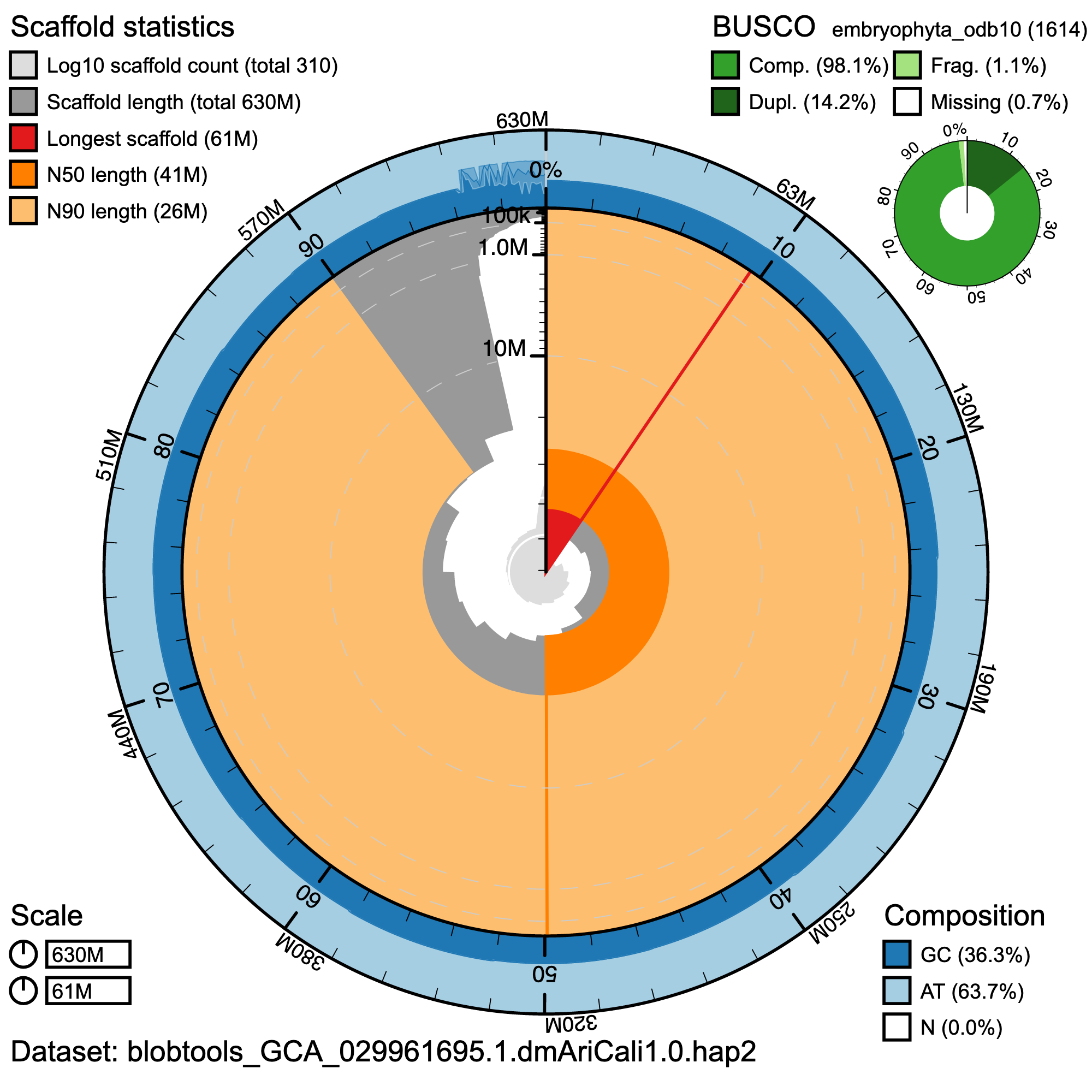Aristolochia californica Torr. (California Pipevine)
Visual overview of genome assembly metrics
K-mer spectra output generated from PacBio HiFi data without adapters using GenomeScope2.0. The bimodal pattern observed corresponds to a diploid genome and the k-mer profle matches that of high (>1%) heterozygosity. K-mers covered at lower coverage and high frequency correspond to differences between haplotypes, whereas the higher coverage and lower frequency k-mers correspond to the similarities between haplotypes.
BlobToolKit Snail plot showing a graphical representation of the quality metrics presented in Table 2 for the A. californica haplotype 1 (B) assembly and haplotype 2 (C) assembly. The plot circle represents the full size of the assembly. From the inside-out, the central plot covers length-related metrics. Line at 61M represents the size of the longest scaffold; all other scaffolds are arranged in size order moving clockwise around the plot and drawn in gray starting from the outside of the central plot. Dark and light orange arcs show the scaffold N50 and scaffold N90 values. The central light gray spiral shows the cumulative scaffold count with a white line at each order of magnitude. White regions in this area refect the proportion of Ns in the assembly; the dark versus light blue area around it shows mean, maximum, and minimum GC vs. AT content at 0.1% intervals (Challis et al. 2020).
Contact maps for the primary and alternate genome assembly generated with PretextSnapshot. Contact maps translate proximity of genomic regions in 3-D space to contiguous linear organization. Each cell in the contact map corresponds to sequencing data supporting the linkage (or join) between two of such regions. Scaffolds are separated by black lines and higher density corresponds to higher levels of fragmentation.
Authors
Samridhi Chaturvedi, Merly Escalona, Mohan P A Marimuthu, Oanh Nguyen, Noravit Chumchim, Colin W Fairbairn, William Seligmann, Courtney Miller, H Bradley Shaffer, Noah K Whiteman




